Junya Ishigami’s Zaishui Art Museum in China was conceived as a ‘gentle giant’
Japanese architect Junya Ishigami completes Zaishui Art Museum, a kilometre-long building positioned in a manmade lake and aiming to ‘bring the outside landscape in’

The Zaishui Art Museum, a newly opened multipurpose building by Japanese architect Junya Ishigami, comprises a striking, kilometre-long structure emerging from the water in north-east China. The project, housing an exhibition area, visitor centre and retail space, aims to reimagine the relationship between humans and nature.
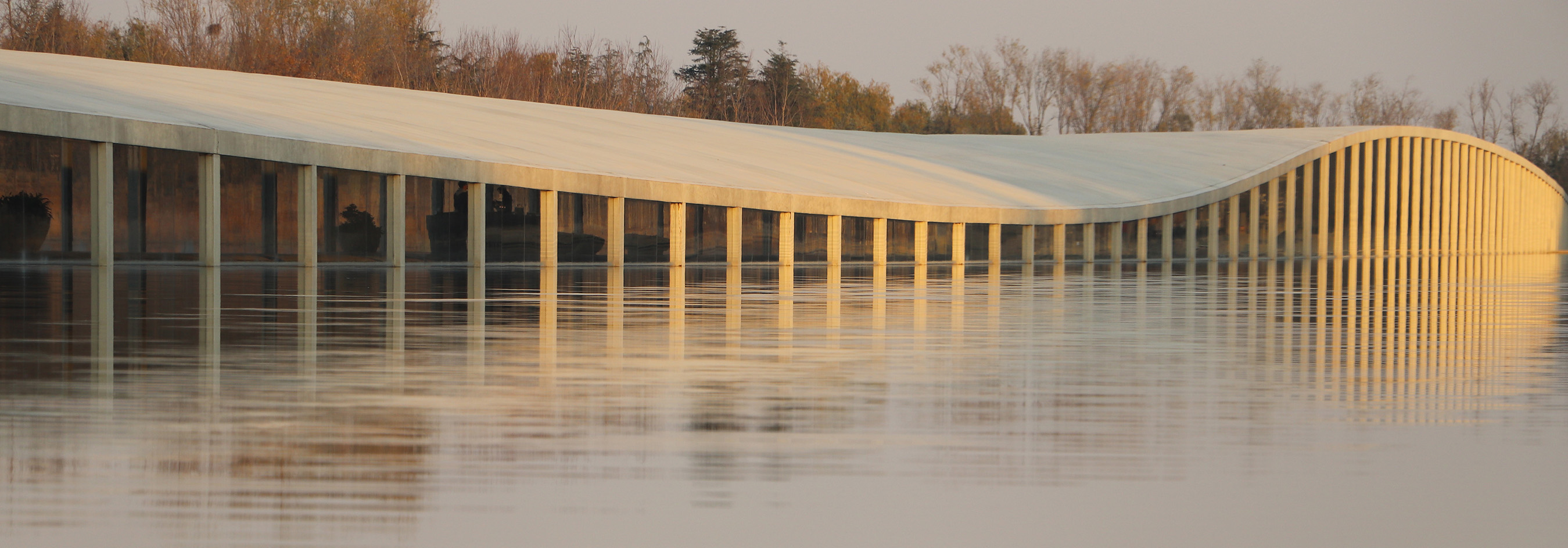
Zaishui Art Museum by Junya Ishigami
The new facility – intended as a starting point that will introduce visitors to the surrounding and currently-in-development Bailuwan district – consists of two steel reinforced concrete wings that are interconnected yet independent.
The first, a gently undulating structure, almost one kilometre in length, is built within a manmade lake and allows water to flow inside, creating a conceptual ‘indoor landscape’. Its accompanying building is located on the north-west of the site, nestled on nearby dry land. It houses an additional café, restrooms and exhibition space.
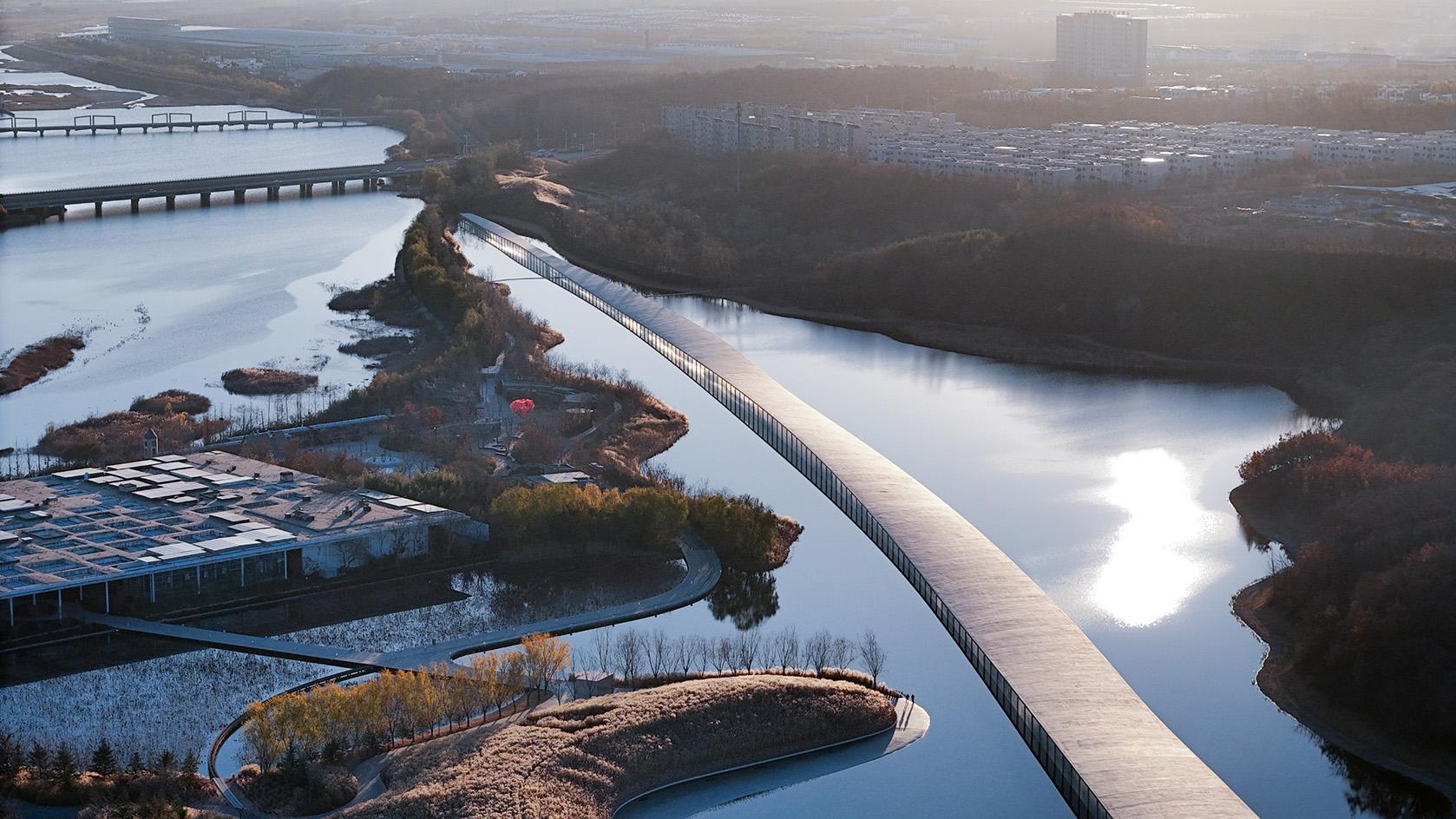
Ishigami designed the long, linear main building so that it can integrate with the lake, creating a continuous horizon by drawing water inside the structure itself. The whole aims to bring ‘the outside in’. Its parametric design creates varying heights, widths and slopes ranging from 1.22m to 4.95m high, and 4.8m to 20m wide.
‘In some places, the soft curve of the roof hangs low, contiguous with the lake surface and mountain slopes behind,’ explains Ishigami, ‘and in others, it turns toward the sky, opening up generously and merging the interior of the building into the landscape outside.’
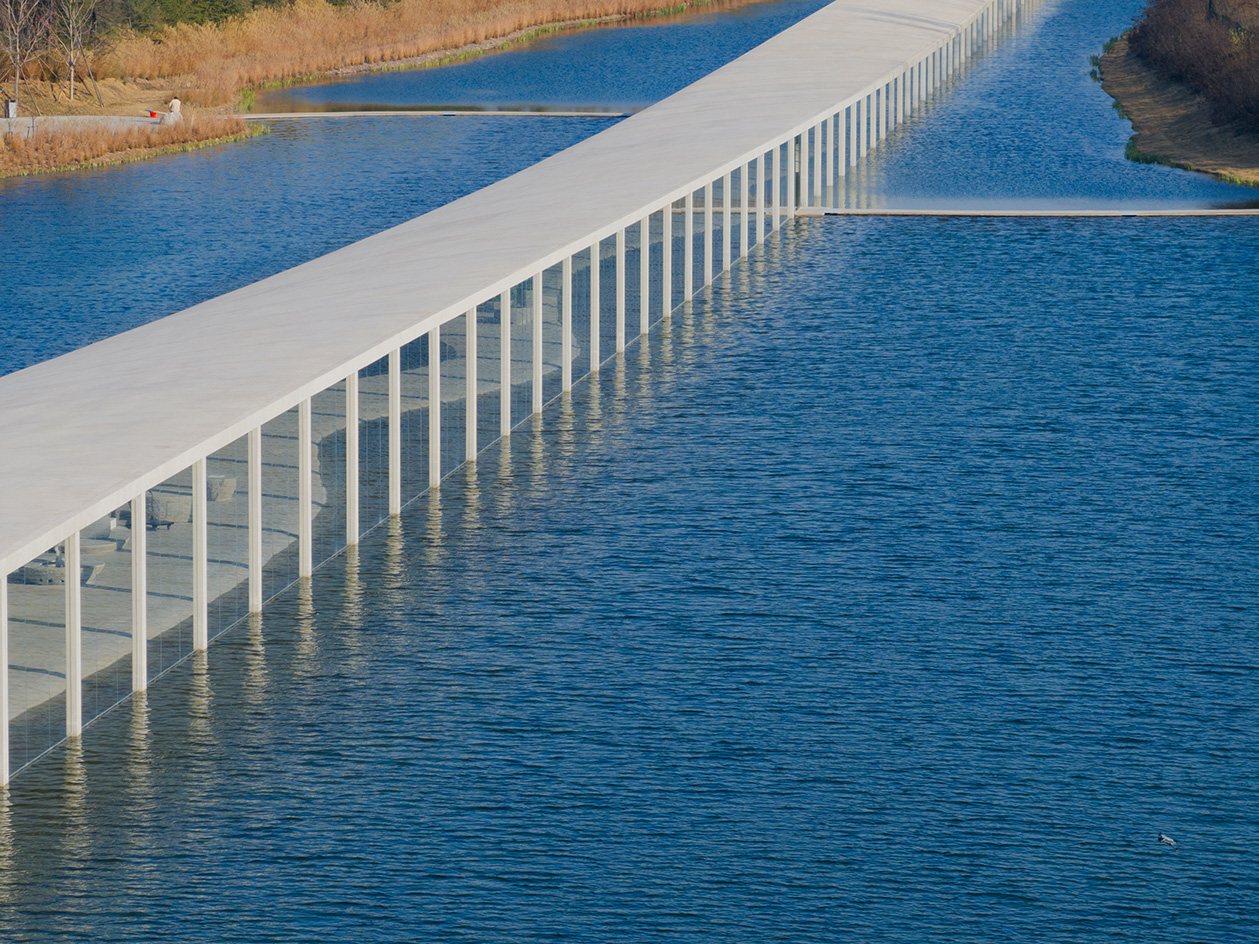
Occupying a total floor plan of 20,000 sq m, the structure is supported by 300 columns positioned in the 2m-deep lake. Floor-to-ceiling glazing across the structure creates lightness and transparency – and panels can be opened in warmer months to allow for natural ventilation.
A small slit located across the lower edge of the glass panels mitigates incoming water levels, while accommodating structural expansion from fluctuating seasonal temperatures.
Wallpaper* Newsletter
Receive our daily digest of inspiration, escapism and design stories from around the world direct to your inbox.
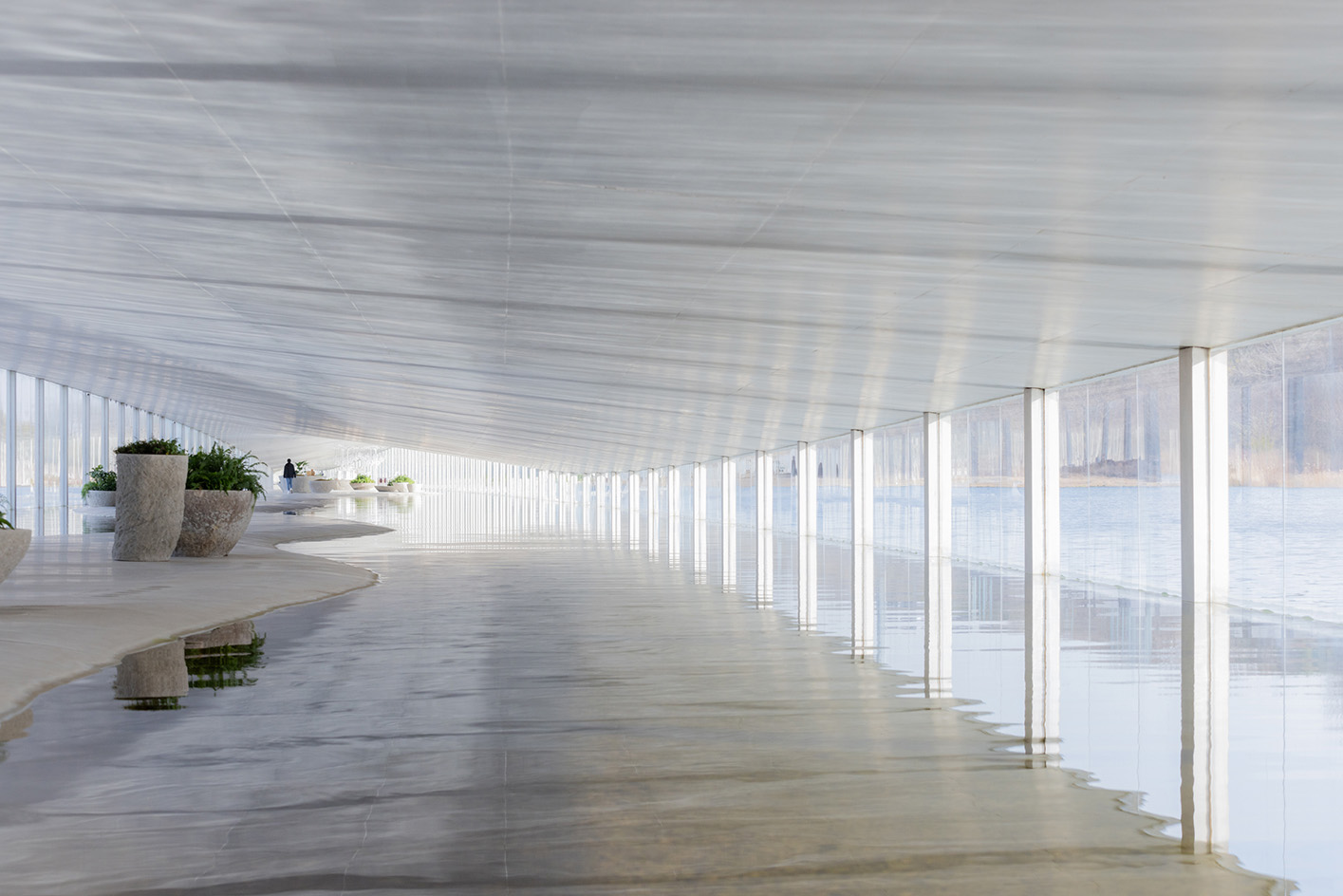
Ishigami approached the site-specific design through an inquiry into China’s built environment. ‘The key [was to] view architecture as a “gentle giant” of an environment, and search for a totally new relationship between natural and humanmade.’
He adds, ‘How [can we] bring [them] as close as possible to each other and make the boundary between them as ambiguous as possible. How [can we] make nature the gentlest presence possible for us humans?’
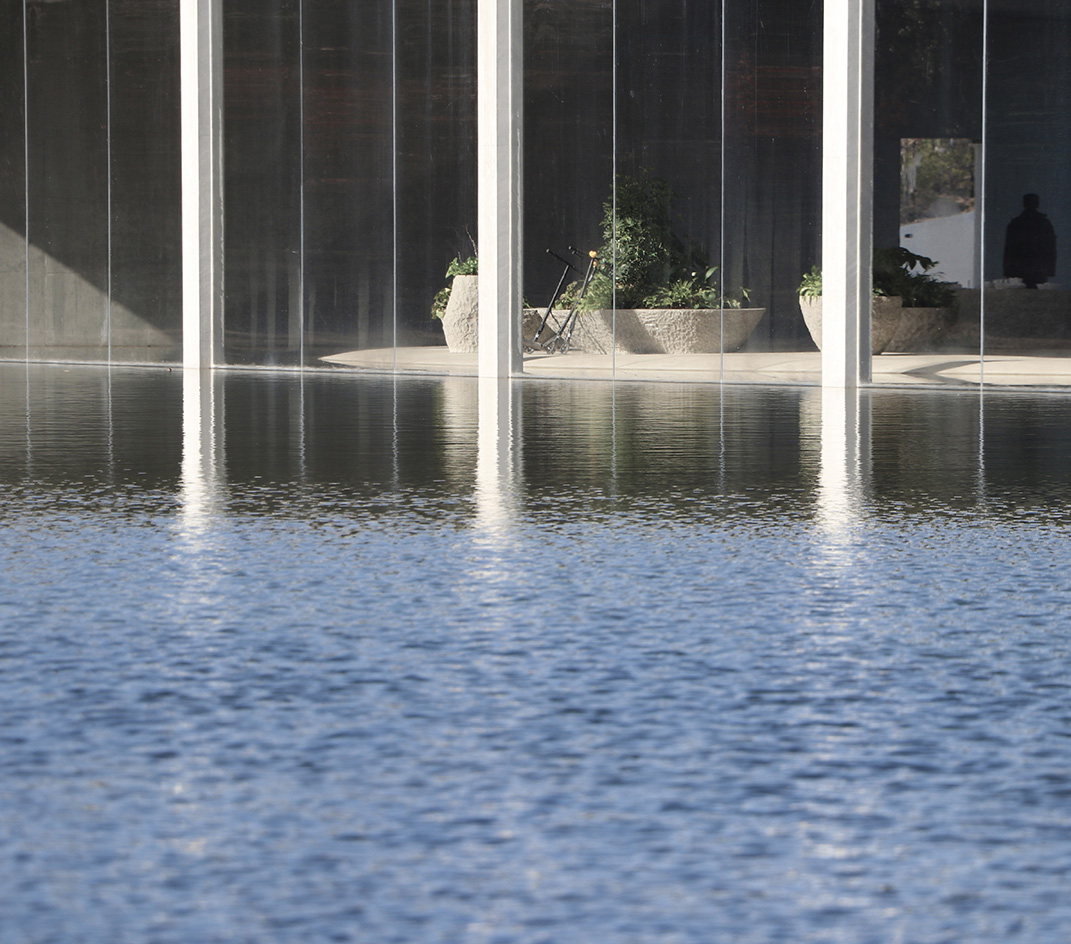
The interior features an elevated concrete pathway spanning the building’s length that mimics a stretch of sand on a beach. Designed 10cm above water level, the indoor walkway features organic curved expressions akin to a real beach.
Inside, rough and textured local sandstone was used for tables and seating. ‘The concept of this building was based on creating a new landscape inside,’ Ishigami says. ‘A new exterior is born in the structure's interior. Thus a new nature, one able to sit gently alongside us, appears inside the architecture.’
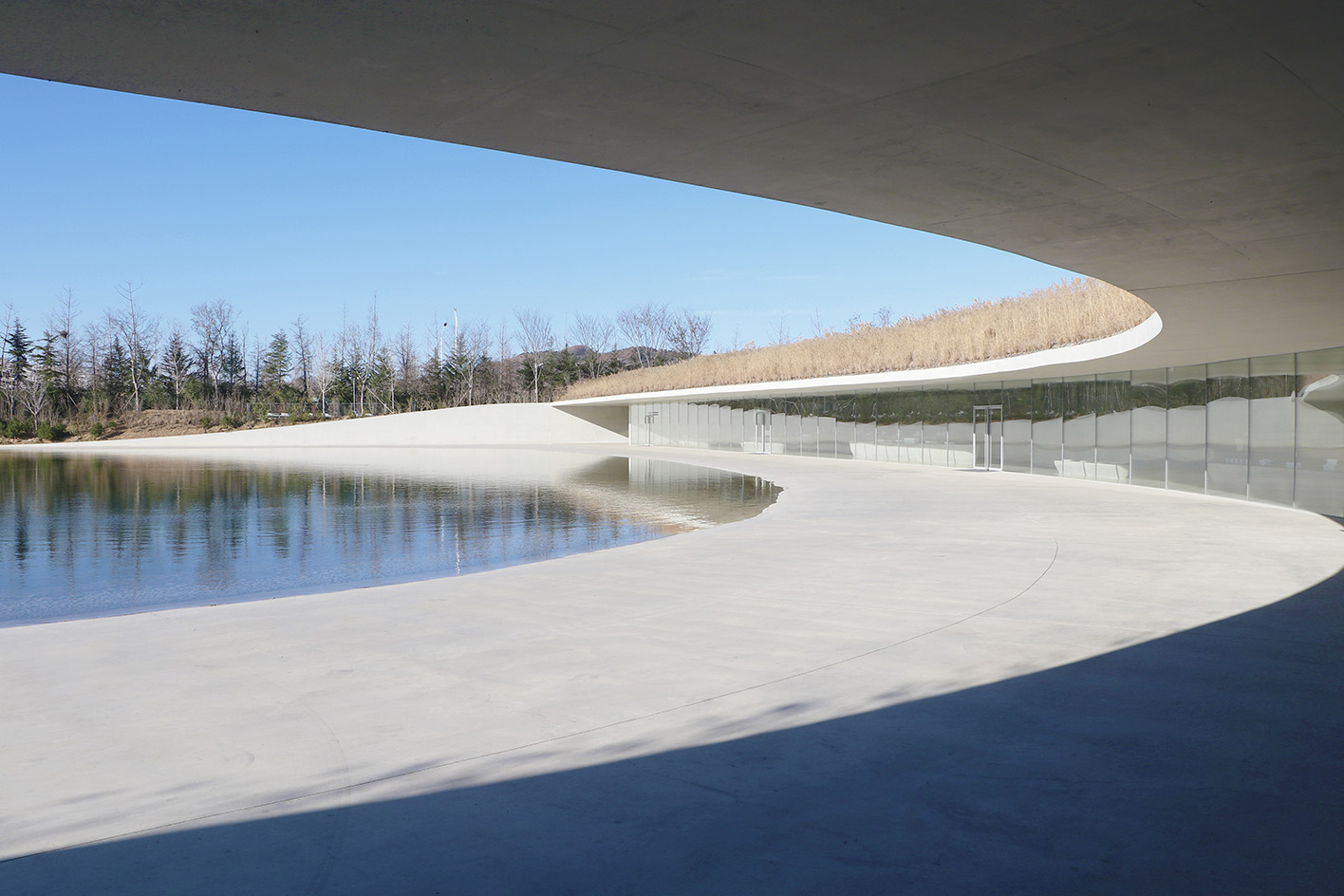
The client’s initial brief outlined the creation of a facility ‘in relation to water’, so the architects conducted research into the canals of Venice in Italy, and China’s historic water towns – such as Wuzhen, a 1,300-year-old water village located on the lower reaches of the Yangtze River, where waterways act as streets and riverbanks as markets.
Ishigami notes: ‘At the same time [in these cases], buildings are always on the riverside and there is still some distance from the water. My intention was to create a stronger relationship by building [directly] on the water.’
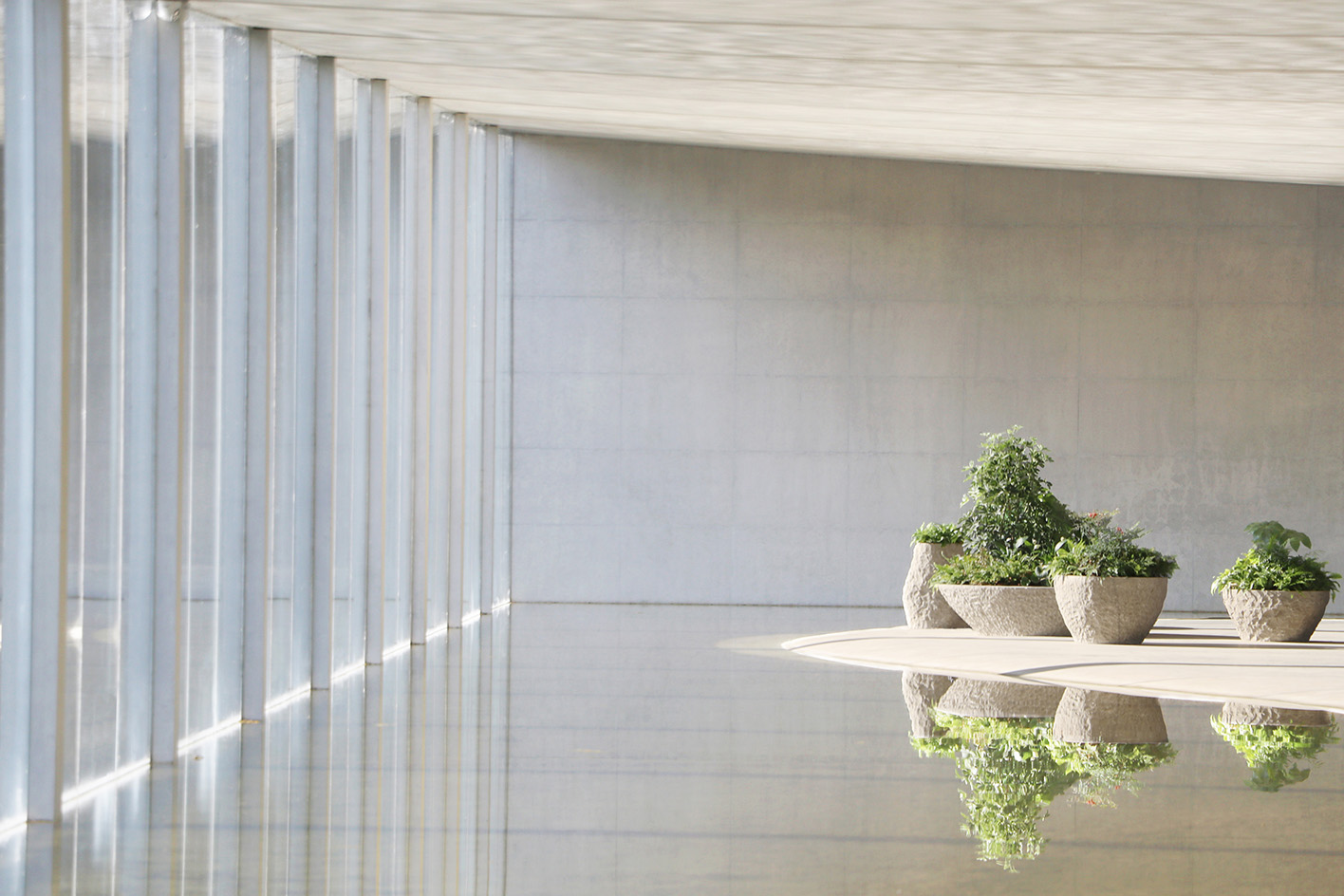
The museum opened with an exhibition focusing on a local chocolate maker, yet intends to accommodate a variety of shows in the future.
Bailuwan is located in Rizhao, in China's Shandong Province. Zaishui Art Museum is one of three buildings commissioned by the same client for the site; the first two – Forest Kindergarten and Church Of The Valley – remain under construction.
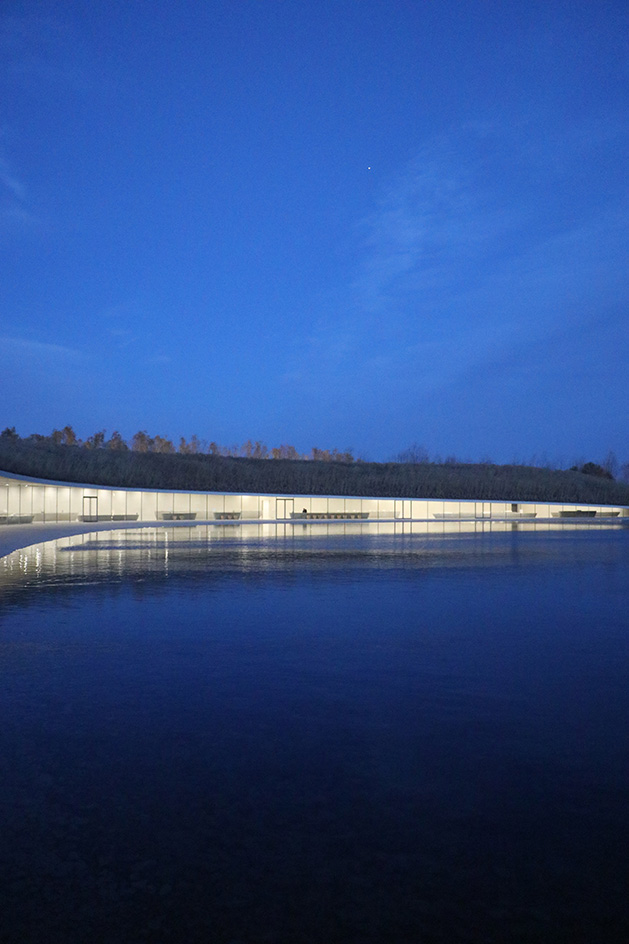
Joanna Kawecki is a Tokyo-based design journalist and consultant. Living in Japan since 2013, she writes extensively about architecture, design and travel, interviewing leading industry figures such as Kengo Kuma and Naoto Fukasawa. She is co-founder of Ala Champ Magazine and design brand IMI Japan, working with craftspersons across the country’s 47 prefectures exploring traditional artisans to innovation entrepreneurs.
-
 Put these emerging artists on your radar
Put these emerging artists on your radarThis crop of six new talents is poised to shake up the art world. Get to know them now
By Tianna Williams
-
 Dining at Pyrá feels like a Mediterranean kiss on both cheeks
Dining at Pyrá feels like a Mediterranean kiss on both cheeksDesigned by House of Dré, this Lonsdale Road addition dishes up an enticing fusion of Greek and Spanish cooking
By Sofia de la Cruz
-
 Creased, crumpled: S/S 2025 menswear is about clothes that have ‘lived a life’
Creased, crumpled: S/S 2025 menswear is about clothes that have ‘lived a life’The S/S 2025 menswear collections see designers embrace the creased and the crumpled, conjuring a mood of laidback languor that ran through the season – captured here by photographer Steve Harnacke and stylist Nicola Neri for Wallpaper*
By Jack Moss
-
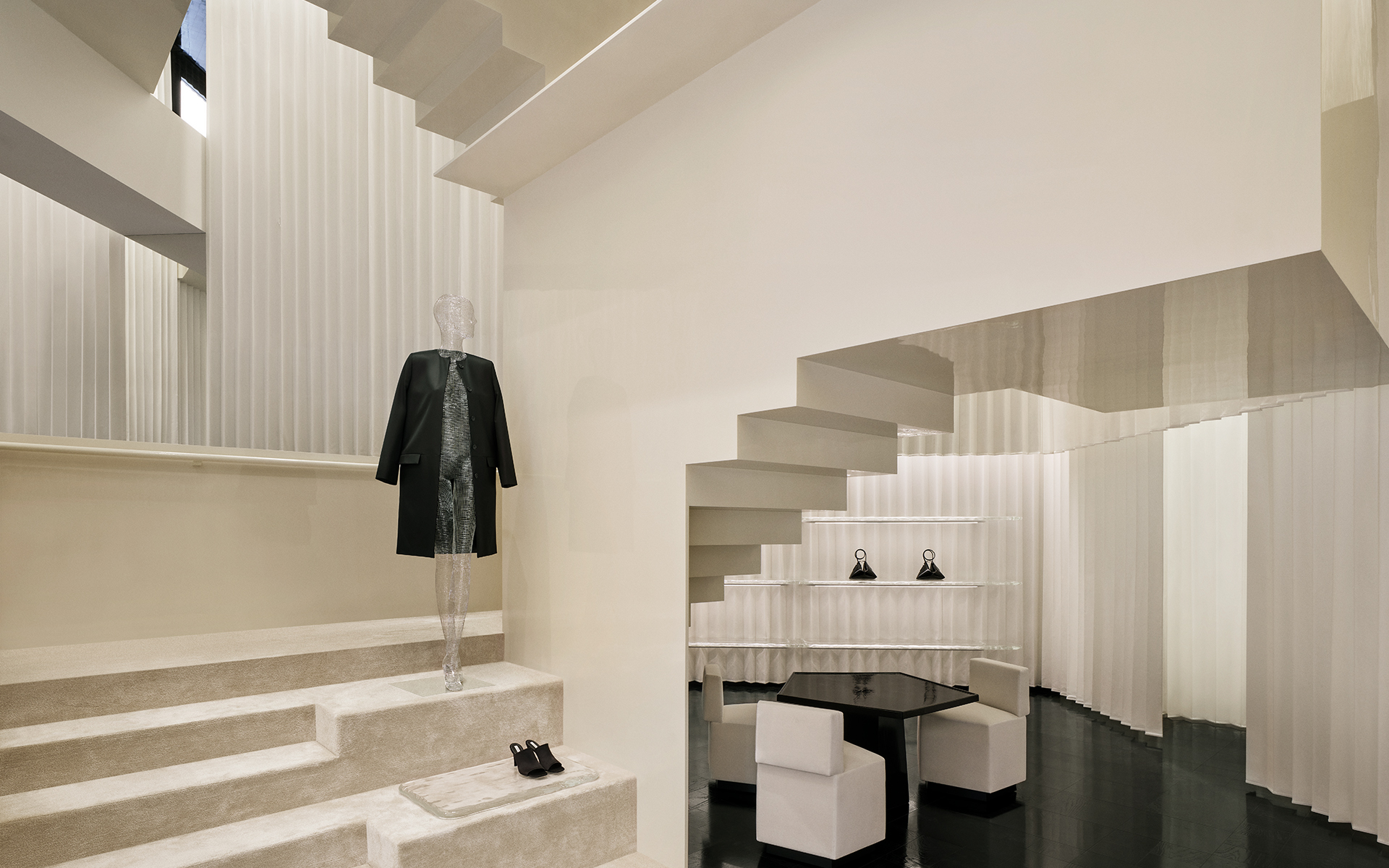 Bold, geometric minimalism rules at Toteme’s new store by Herzog & de Meuron in China
Bold, geometric minimalism rules at Toteme’s new store by Herzog & de Meuron in ChinaToteme launches a bold, monochromatic new store in Beijing – the brand’s first in China – created by Swiss architecture masters Herzog & de Meuron
By Ellie Stathaki
-
 The upcoming Zaha Hadid Architects projects set to transform the horizon
The upcoming Zaha Hadid Architects projects set to transform the horizonA peek at Zaha Hadid Architects’ future projects, which will comprise some of the most innovative and intriguing structures in the world
By Anna Solomon
-
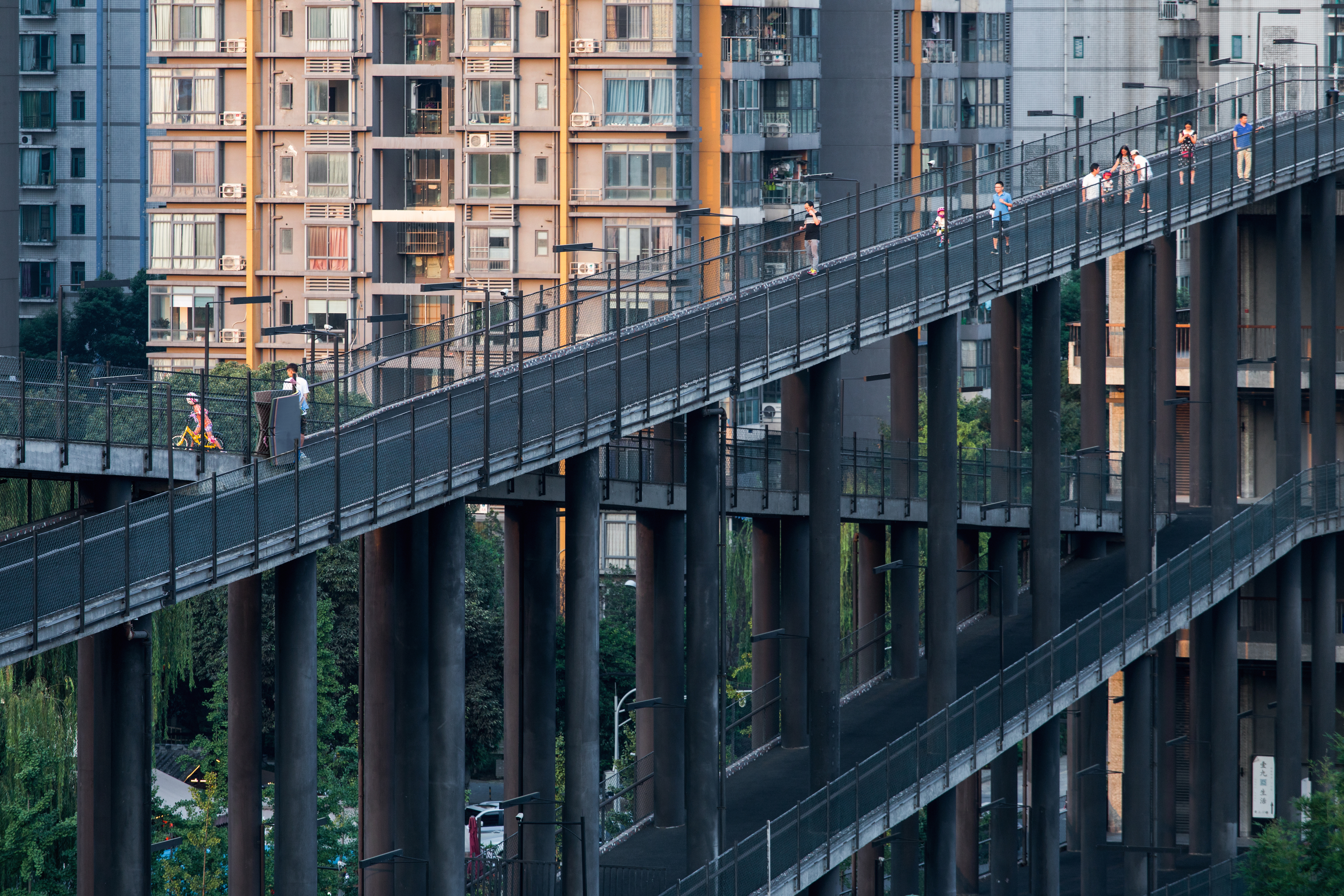 Liu Jiakun wins 2025 Pritzker Architecture Prize: explore the Chinese architect's work
Liu Jiakun wins 2025 Pritzker Architecture Prize: explore the Chinese architect's workLiu Jiakun, 2025 Pritzker Architecture Prize Laureate, is celebrated for his 'deep coherence', quality and transcendent architecture
By Ellie Stathaki
-
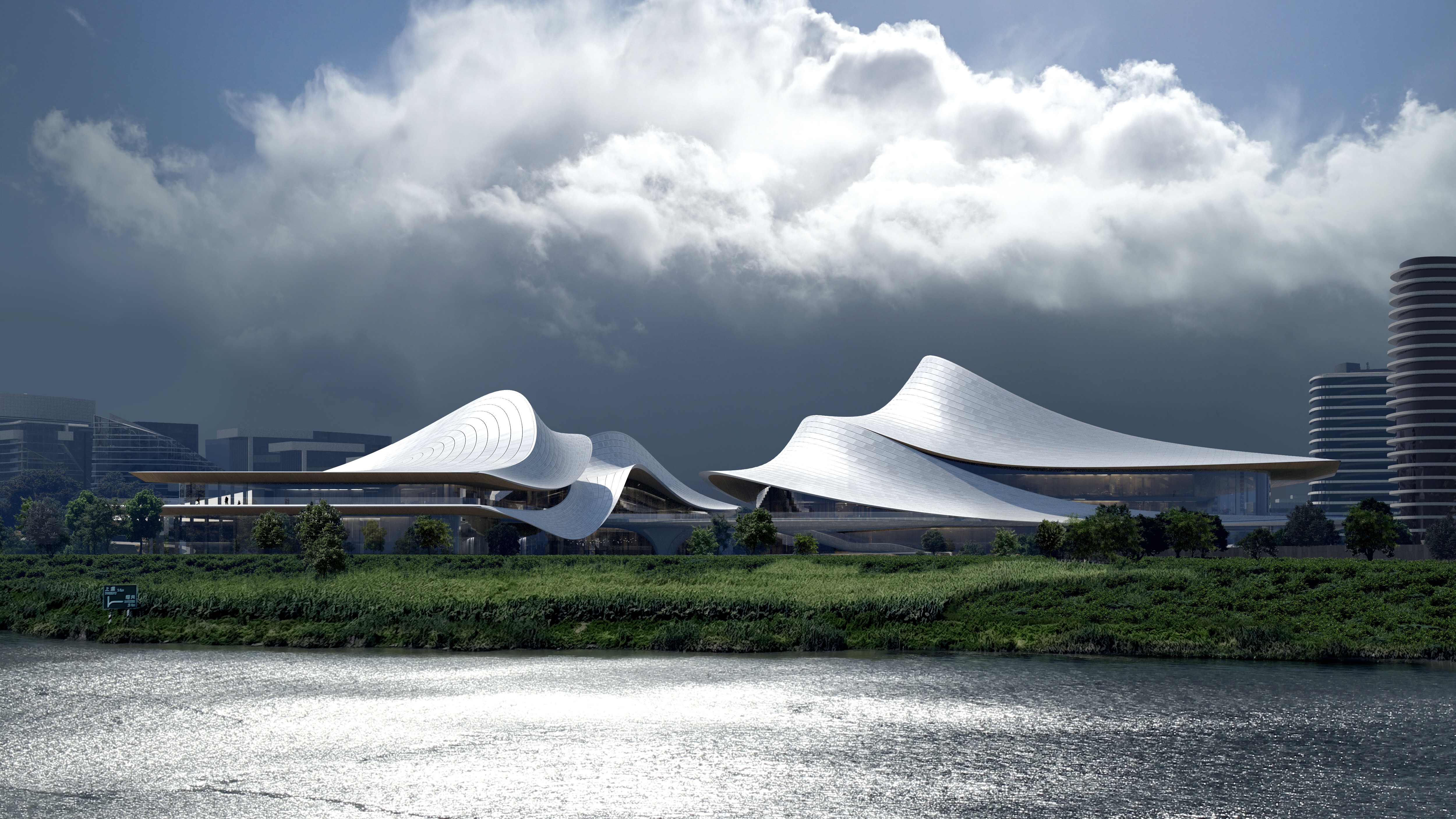 Zaha Hadid Architects reveals plans for a futuristic project in Shaoxing, China
Zaha Hadid Architects reveals plans for a futuristic project in Shaoxing, ChinaThe cultural and arts centre looks breathtakingly modern, but takes cues from the ancient history of Shaoxing
By Anna Solomon
-
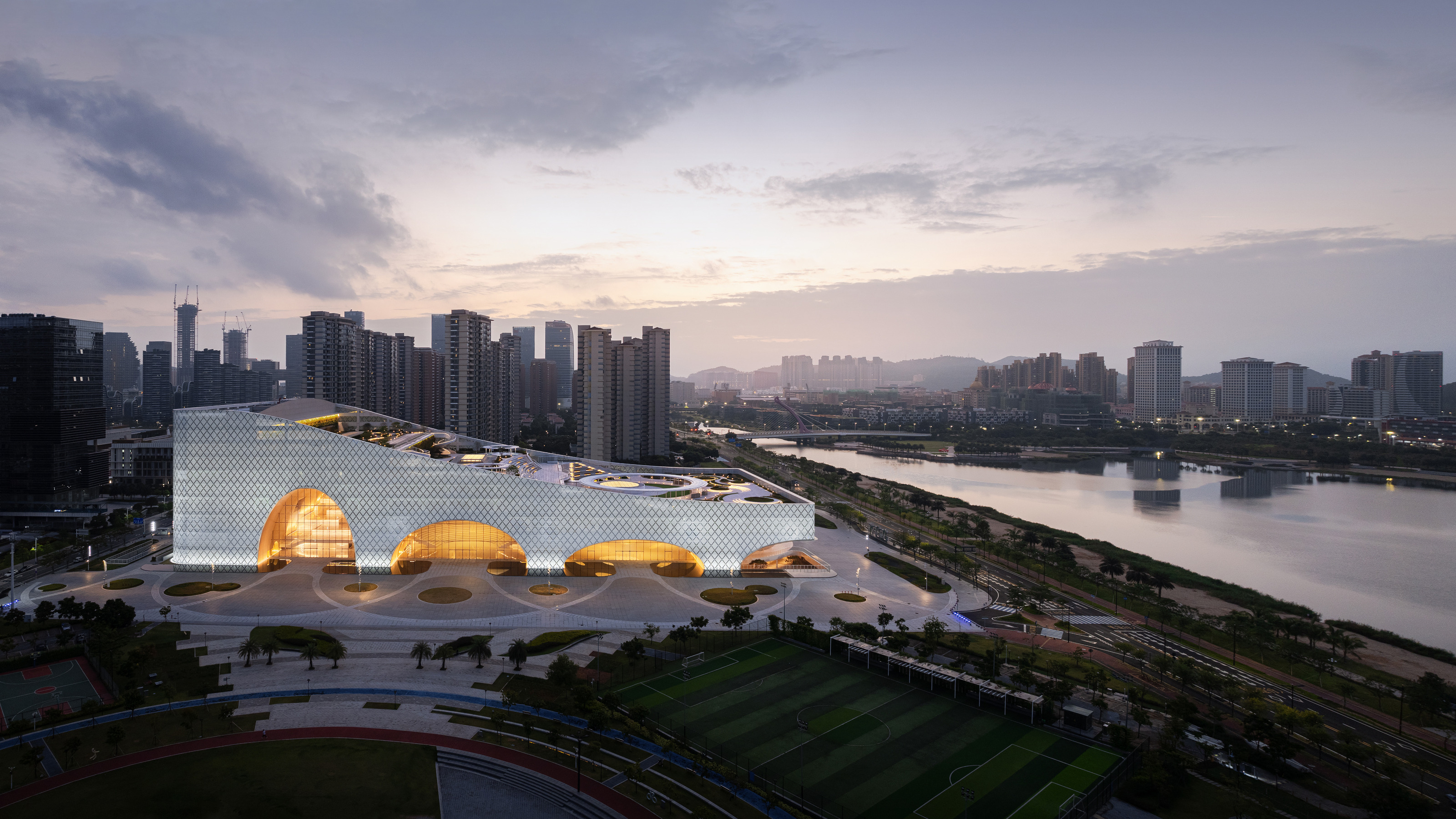 The Hengqin Culture and Art Complex is China’s newest cultural megastructure
The Hengqin Culture and Art Complex is China’s newest cultural megastructureAtelier Apeiron’s Hengqin Culture and Art Complex strides across its waterside site on vast arches, bringing a host of facilities and public spaces to one of China’s most rapidly urbanising areas
By Jonathan Bell
-
 The World Monuments Fund has announced its 2025 Watch – here are some of the endangered sites on the list
The World Monuments Fund has announced its 2025 Watch – here are some of the endangered sites on the listEvery two years, the World Monuments Fund creates a list of 25 monuments of global significance deemed most in need of restoration. From a modernist icon in Angola to the cultural wreckage of Gaza, these are the heritage sites highlighted
By Anna Solomon
-
 Tour Xi'an's remarkable new 'human-centred' shopping district with designer Thomas Heatherwick
Tour Xi'an's remarkable new 'human-centred' shopping district with designer Thomas HeatherwickXi'an district by Heatherwick Studio, a 115,000 sq m retail development in the Chinese city, opens this winter. Thomas Heatherwick talks us through its making and ambition
By David Plaisant
-
 Raw, refined and dynamic: A-Cold-Wall*’s new Shanghai store is a fresh take on the industrial look
Raw, refined and dynamic: A-Cold-Wall*’s new Shanghai store is a fresh take on the industrial lookA-Cold-Wall* has a new flagship store in Shanghai, designed by architecture practice Hesselbrand to highlight positive spatial and material tensions
By Tianna Williams